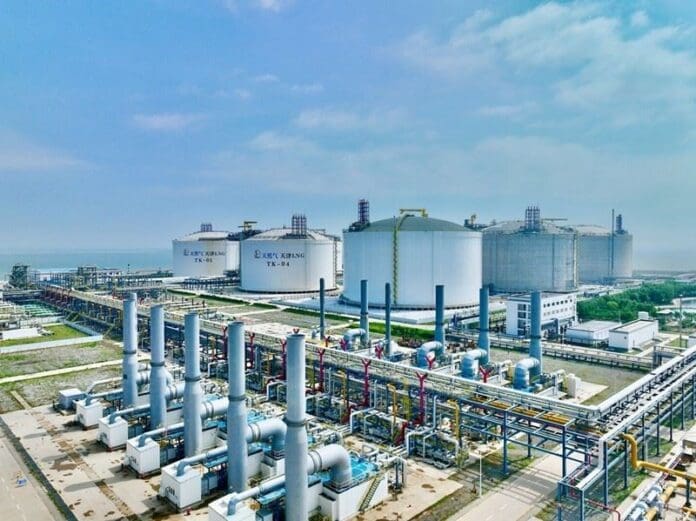China Petroleum & Chemical Corporation has officially put China’s first and largest liquefied natural gas (LNG) storage tank of 9.5 MMscf (270,000 m3) into service at its Qingdao LNG Receiving Terminal. The tank will add 58.3 MMscf (165 million m3) of storage capacity to meet the gas demand of 2.16 million households for five months during the winter heating season.
The mega LNG storage tank, independently designed, developed, and built by Sinopec, has a diameter of 330 ft. (100.6 m) and a height of 180 ft. (55 m), a key project of Sinopec Qingdao LNG Receiving Terminal’s Phase III construction. The tank adopted 17 patented technologies with independent intellectual property, the main structure was completed in only 18 months and it’s in full service within 27 months. In the construction process, Sinopec has localized the applications of 20 core pieces of equipment that significantly reduced procurement costs and boosted the localization level of the tank to 95%, the highest in China.
On November 2, Sinopec’s Tianjin LNG Receiving Terminal completed the Phase II construction with three 7.8-MMscf (220,000-m3) storage tanks coming into full service, adding more than 14 Bscf (400 million m3) of natural gas storing capacity to bring the total storage capacity of Tianjin terminal to 38 Bscf (1.08 billion m3), the largest in China. Sinopec’s two LNG terminals in Qingdao and Tianjin, with seven and nine storage tanks, respectively, have a total of 59.3 Bscf (1.68 billion m3) of storage capacity, further guaranteeing the supply of resources in the winter season.
Sinopec has continued to expand natural gas storage capacity following a strategic plan covering the full scope of production, supply, storage, and sales. The group now has about 176.6 Bscf (5 billion m3) of LNG storage capacity. Sinopec has built 12 natural gas storage depots including the Zhongyuan cluster, Jintan, Wen 96, and Jianghan Yanxue, and is expanding the LNG receiving terminals in Tianjin and Qingdao.
Looking ahead, Sinopec aims to build more natural gas storage depots and LNG receiving terminals in China to further strengthen the natural gas storage and peak gas consumption adjustment capabilities and expand LNG storage capacities during its five-year plan.

















